Last fall I purchased a beautiful silk scarf from a crafter. As we visited, she told me she dyed the scarf using the shibori method. Well, that was a new word for me and after explaining quickly how she wraps the fabric around a pole before dyeing it, I asked her to spell “shibori” for me so I wouldn’t forget. When I returned home, I looked it up online and became fascinated with the history and many techniques of shibori dyeing, determined to some day give it a try.
Shibori is an ancient Japanese art form of making designs on fabric. Some might call it tie-dye, but when I think of tie-dye, I see in my head bright neon colored t-shirts with some sort of circular pattern of colors. Shibori actually has as many as 15 different techniques to achieve unique beautiful patterns depending on how the fabric is folded, tied, stitched, bound, compressed, or wrapped. Each technique forms a resist for the dye which forms the patterns. Traditionally, the fabrics were dyed in indigo, a natural blue dye from plants, but today a variety of dye colors are used.
For a quick history of this beautiful form of art and craftmanship, read this post, and this post.
For my first adventure in shibori dyeing, I decided to use the rest of the cotton flour sack dish towels I had from my grandparents. (I shared how I used some of them for embroidery a while back.) I folded, tied, stitched, bound, compressed, and wrapped them first and then dyed them all together. Since I did not have indigo dye available, I used Rit navy blue dye. Sorry, I was in experiment mode and not tutorial mode, so I did not take pictures of the steps I took along the way. I will show you each piece before dyeing and then how it turned out. You can find many videos about shibori dyeing on YouTube.
The simplest technique was an accordion fold. I folded the fabric back and forth accordion style and then folded that long strip in an accordion fold. In the first experiment, I placed matching hard plastic lids on both sides of the folded piece and secured the lids with several rubber bands. As you can see in the photo of the dyed towel, the areas compressed by the lids did not absorb the dye. This technique is called Itajime Shibori, or “fold and clamp” shibori in which a resist is formed by shaped objects compressing the fabric.
I folded this towel in the same way as above, and used wooden apple shapes on each side of the folded piece. Since this was a smaller towel, with less folds, the apple shapes showed up fairly well on the finished piece.
The next towel was also folded accordion style both directions and then secured on each end with binder clips. I also put two rubber bands around the middle. The shape of the clips only show up well on the outer edges.
This time I folded the towel accordion style starting at one corner in a fan shape and then folded that strip accordion style as well. I clipped both ends with binder clips. (I forgot to take a pre-dye picture of this one!)
This next technique is called Arashi Shibori, or “storm” shibori (which makes sense when you see the finished product!) Starting with a short piece of PVC pipe I wrapped the flour sack towel around the pipe, winding string around the fabric and scrunching the fabric down every few inches. I put rubber bands on the ends to make sure my string stayed in place as I was pushing the fabric down. I really like the crazy lines this technique left on the dyed fabric.
In the next one I used a broken square plastic leg from a shelf and wrapped the towel around it in the same way as the PVC pipe (I thought!) I am not really sure what I did different from the previous one, but there was less fabric and I probably put it on without twisting as I wrapped. I also don’t know how I got the variation of shading, but I do like it. The square plastic also left a unique design. This is why I call it experimenting because I don’t know enough yet to end up with something similar a second time!
The next technique I tried is called Kumo Shibori, or “spider web” shibori where the fabric is bound around a small pebble or marble. I used wooden beads and randomly placed them on the towel and secured each in place with a rubber band.
Another technique I tried was Nui Shibori, or “stitched” shibori. Many different designs can be made with stitches. On this one I stitched straight lines by hand across the fabric and pulled the threads tight to gather the fabric. As you can tell by the finished product, my “straight” lines are a little curvy. That’s what happens when you freehand.
I folded the next towel in half and stitched three half circles on the fold with three lines of stitching each. On the unfolded edge, I stitched several rows of straight lines through both layers of fabric. All of the threads were pulled tight to gather.
This next technique is called Kanoko Shibori. In this method portions of fabric are plucked up by hand and bound tightly with thread. You can see in the photos the thread lines on the dyed fabric.
On the following towel, I used both the stitching technique and Kanoko. I sewed the straight stitches first and then gathered the threads after I made the horns.
On this towel I did a straight accordion fold for the first fold and then a triangle accordion fold for the second fold. Then I fastened each point of the triangle with rubber bands.
For this towel I made the first accordion fold and then pulled up a portion of the fold on each side in a zig-zag fashion securing each pulled section with rubber bands.
For some more ideas on folding, check out this shibori folding tutorial video I found.
Are you ready to give it a try?
I am hooked. I can’t wait to try more shibori dyeing and maybe figure out how to use more than one dye color.

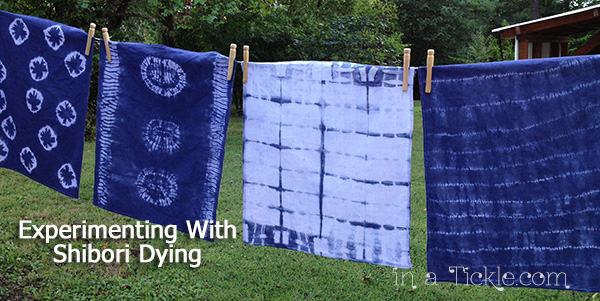
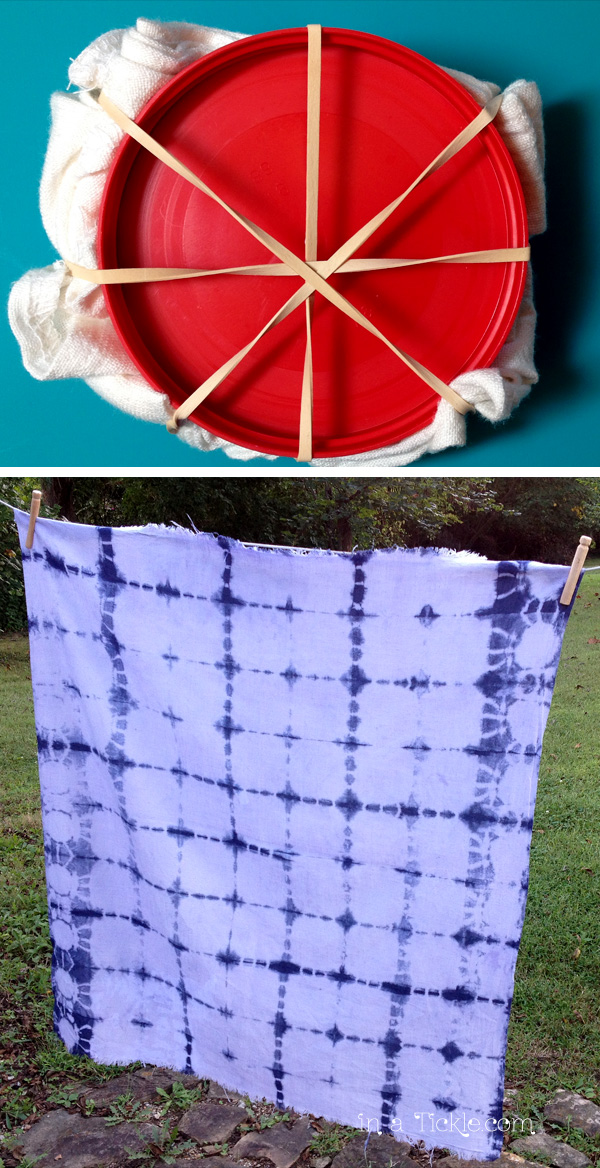
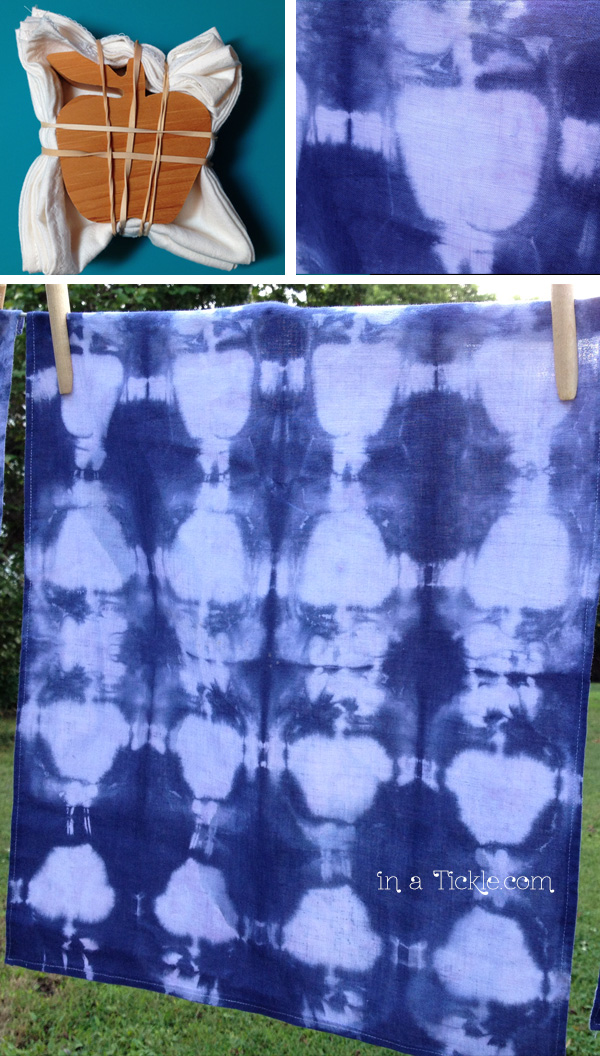
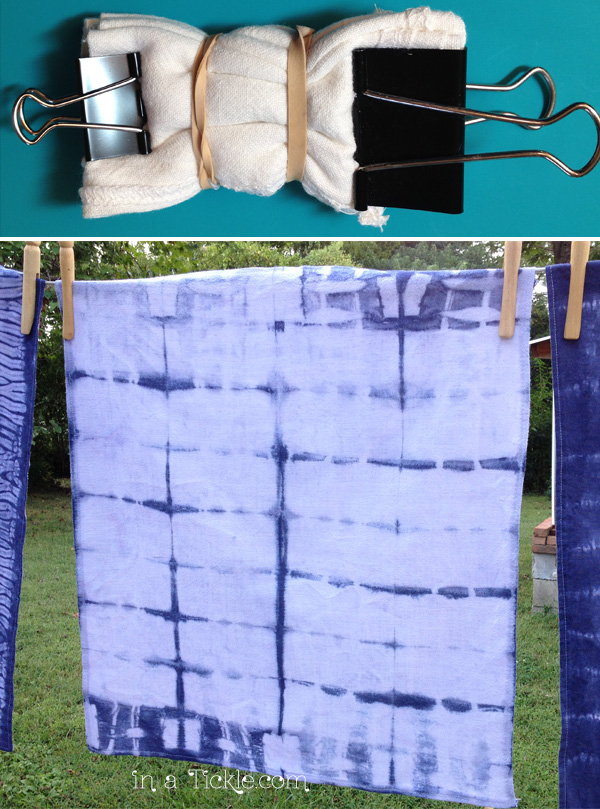

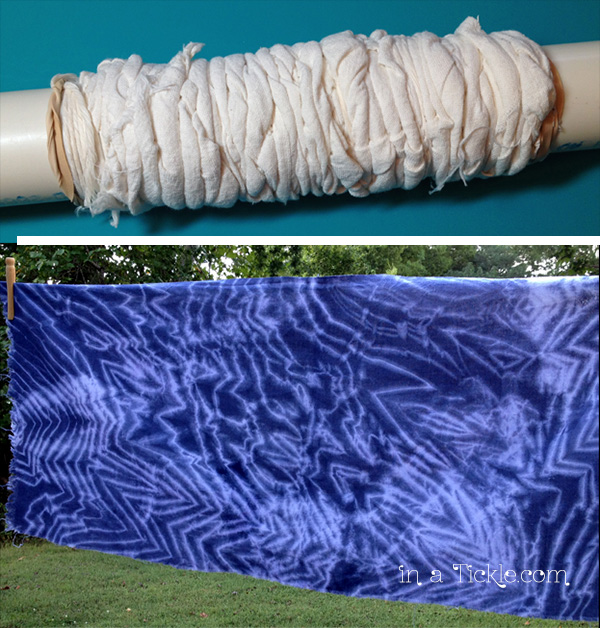
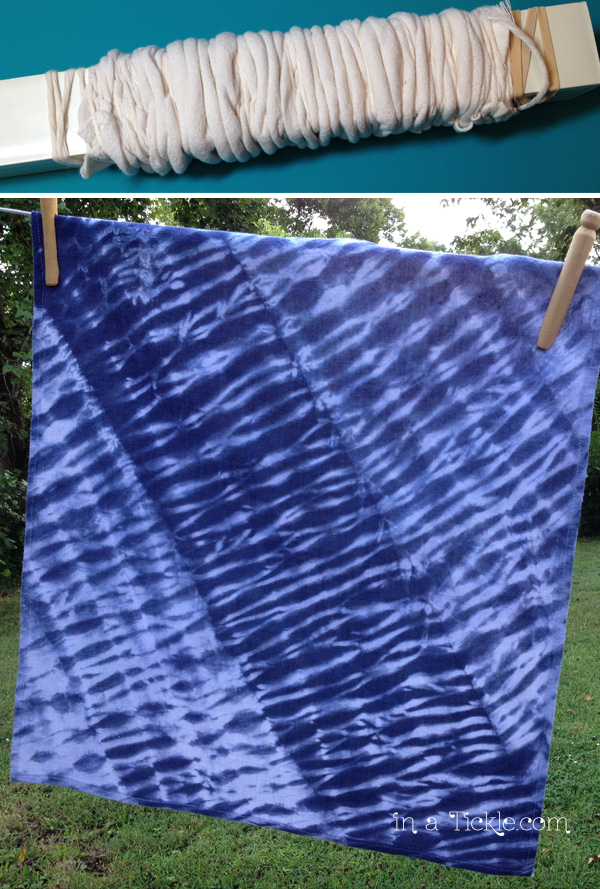
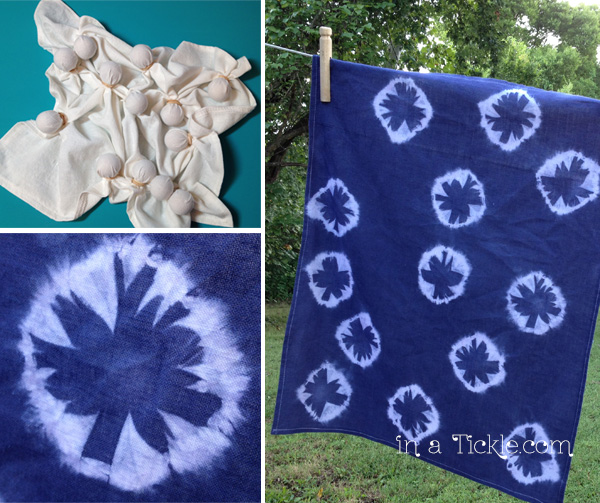
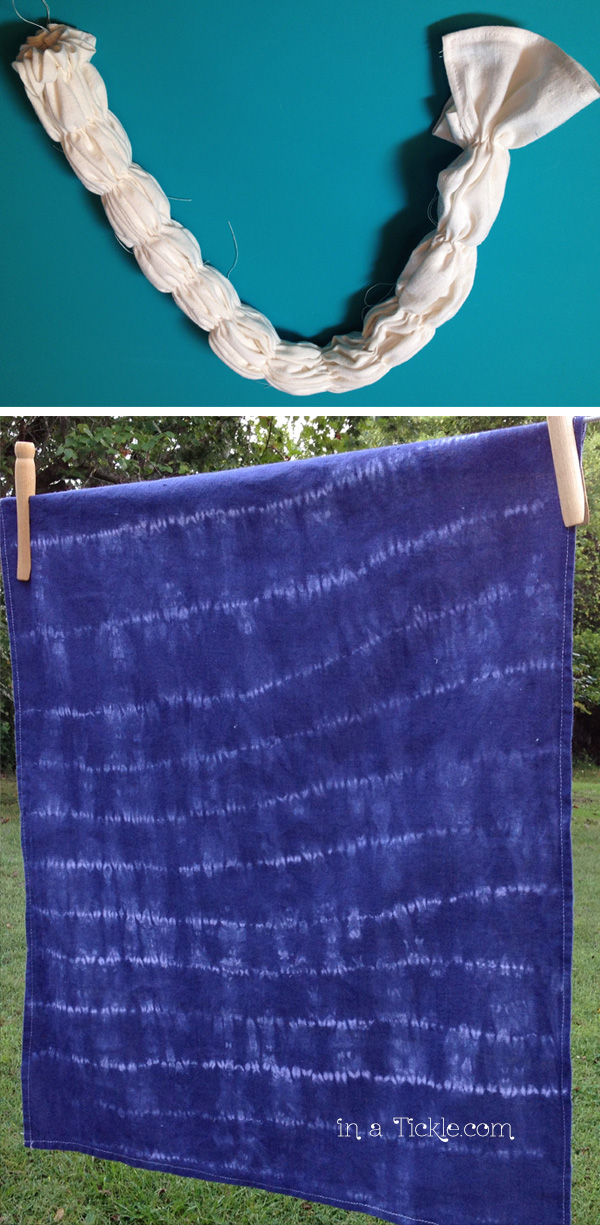
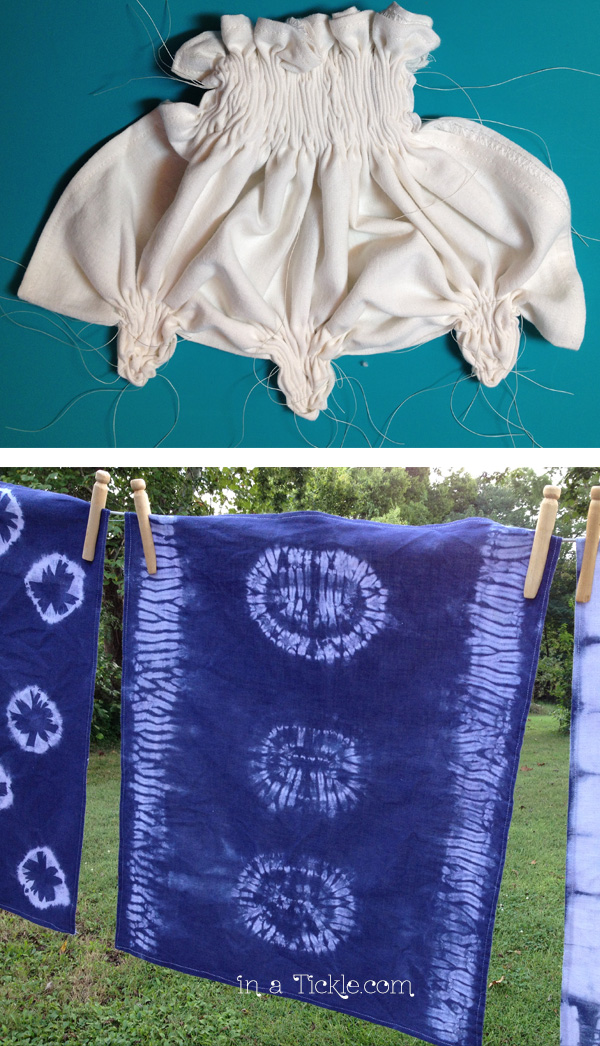
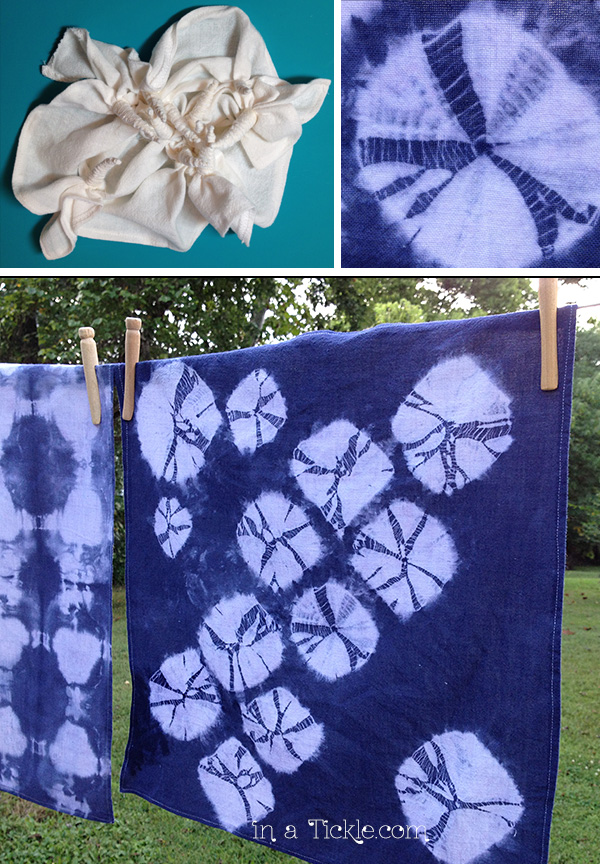
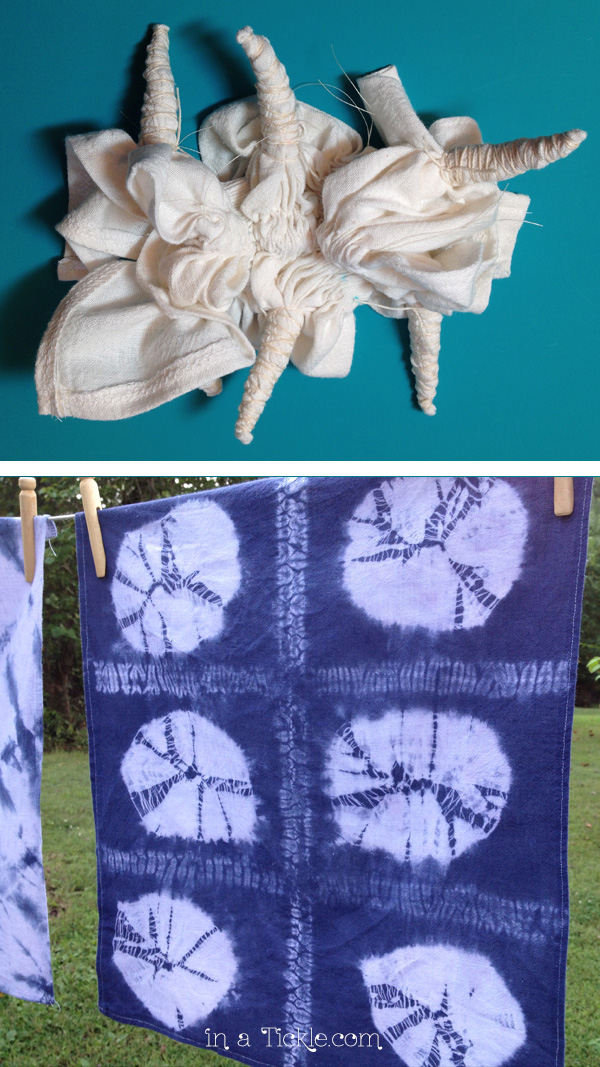
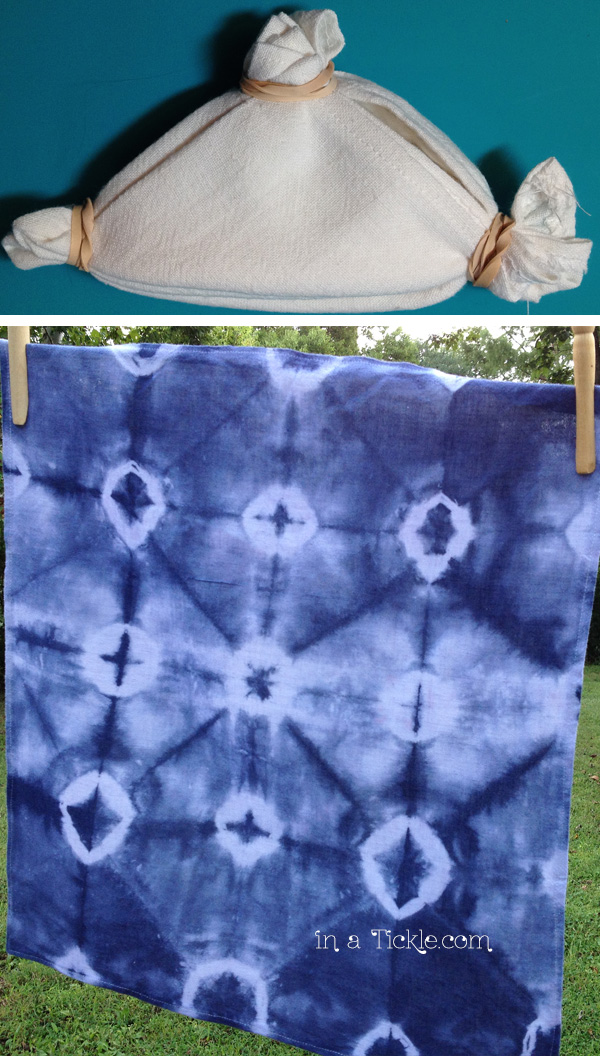
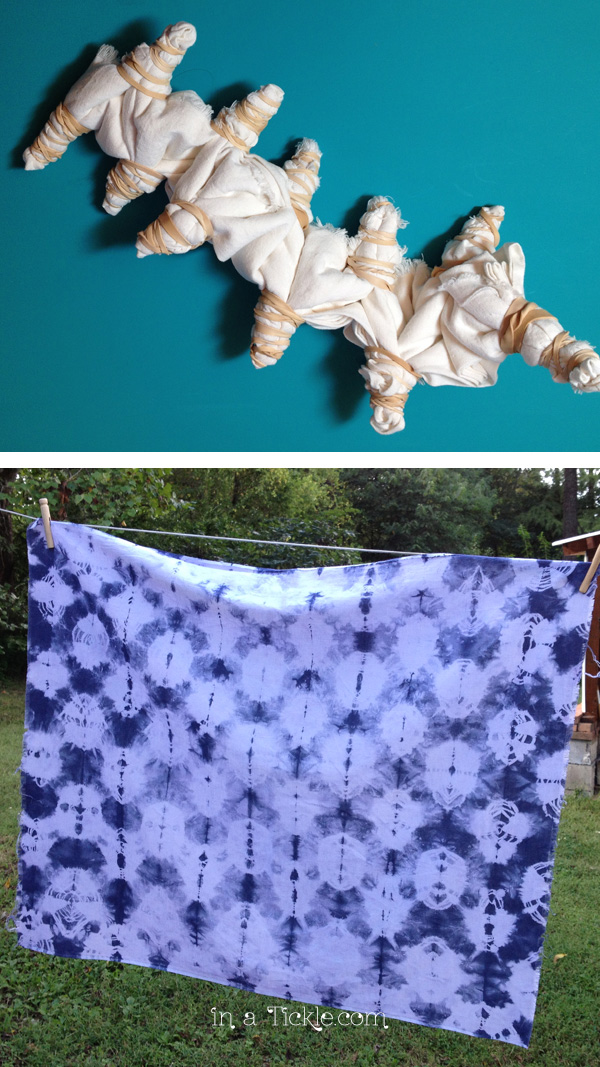
It looks like fun! I can’t wait to see what you use your fabric for.